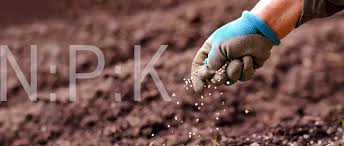
8월 . 21, 2024 09:41 Back to list
Choosing the Right Nitrogen Fertilizer for Healthy Watermelon Growth and Yield Enhancement
Nitrogen-Based Fertilizers for Watermelon Enhancing Growth and Yield
Watermelons (Citrullus lanatus) are one of the most refreshing and popular fruits, enjoyed worldwide during the warmer months. To produce high-quality watermelons with optimal size, sweetness, and color, proper nutrition is paramount, particularly the adequate supply of nitrogen. Nitrogen-based fertilizers play a crucial role in promoting the growth and yield of watermelon crops. In this article, we will explore the importance of nitrogen in watermelon cultivation, the types of nitrogen fertilizers available, and best practices for their application.
The Role of Nitrogen in Watermelon Growth
Nitrogen is one of the essential macronutrients required for plant growth. It is a vital component of amino acids, proteins, and chlorophyll, the latter being crucial for photosynthesis. For watermelons, nitrogen facilitates vigorous vegetative growth, which is important for the development of large, healthy vines and leaves. This is especially crucial during the early stages of growth when the plant is establishing its root system. Additionally, nitrogen supports fruit development, enhances flowering, and contributes to higher sugar content, ultimately leading to better fruit quality.
In watermelon cultivation, the need for nitrogen varies according to the growth stage. During the early growth stages, a higher nitrogen supply is necessary to support leaf and vine development. As watermelons enter the flowering and fruiting stages, the nitrogen requirement decreases slightly, allowing the plants to focus on energy allocation towards fruit size and sweetness.
Types of Nitrogen-Based Fertilizers
There are several types of nitrogen-based fertilizers that can be used in watermelon production. These can be broadly categorized into organic and inorganic fertilizers.
1. Inorganic Nitrogen Fertilizers These synthetic fertilizers are highly concentrated forms of nitrogen and are available in various forms, including urea, ammonium nitrate, and calcium nitrate. Urea, with a nitrogen content of about 46%, is one of the most common nitrogen fertilizers. It needs to be converted into ammonium and nitrate forms in the soil to be taken up by plants. Ammonium nitrate provides both ammonium and nitrate nitrogen, leading to quick availability for the plants. Calcium nitrate not only supplies nitrogen but also adds calcium, benefiting overall plant health.
nitrogen based fertilizer for watermelon

2. Organic Nitrogen Fertilizers These include sources such as compost, manure, and fish emulsion. While they release nitrogen more slowly than inorganic fertilizers, they also improve soil structure and promote beneficial microbial activity. Organic fertilizers can be an excellent choice for sustainable farming practices.
Best Practices for Application
To achieve the best results with nitrogen-based fertilizers in watermelon production, there are several best practices to keep in mind
- Soil Testing Before applying fertilizers, conduct soil tests to determine existing nutrient levels and pH. This will help you tailor nitrogen applications to the specific needs of your soil and crop.
- Balanced Application While nitrogen is vital, it’s important not to over-fertilize. Excess nitrogen can lead to excessive vegetative growth at the expense of fruit development and can also increase susceptibility to diseases.
- Split Applications Applying nitrogen in split doses throughout the growing season helps match the plants' nutrient uptake with their growth stages, ensuring that watermelons receive optimal nutrition when they need it most.
- Timing Apply nitrogen fertilizers at strategic times, such as right before the flowering and fruiting stages, to maximize uptake and incorporation.
In conclusion, nitrogen-based fertilizers are pivotal in the successful cultivation of watermelons. By understanding the role of nitrogen, selecting the appropriate type of fertilizer, and applying best practices, growers can enhance the growth, yield, and quality of their watermelon crops. As consumer demand for high-quality, flavorful watermelons continues to rise, optimizing nitrogen use will remain a critical component of successful watermelon farming.
-
10 10 10 Fertilizer Organic—Balanced NPK for All Plants
NewsJul.30,2025
-
Premium 10 10 10 Fertilizer Organic for Balanced Plant Growth
NewsJul.29,2025
-
Premium 10 10 10 Fertilizer Organic for Balanced Plant Growth
NewsJul.29,2025
-
Premium 10 10 10 Fertilizer Organic for Balanced Plant Growth
NewsJul.29,2025
-
50 Pound Bags of 13-13-13 Fertilizer for All Plants – Bulk & Organic Options
NewsJul.28,2025
-
High-Efficiency 15-30-15 Granular Fertilizer for Healthy Crops
NewsJul.28,2025
